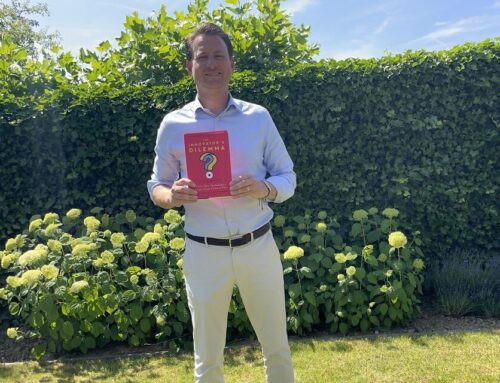In 1975, Kodak engineer Steve Sasson developed the first digital camera, predicting that digital photography would dominate within two decades. Despite holding key patents, Kodak hesitated – fearing disruption to its lucrative film business. Its strengths eventually became its greatest weaknesses, and in 2012, Kodak filed for bankruptcy.
Kodak’s story is a textbook case of the organizational paradox.
Clayton Christensen’s The Innovator’s Dilemma explains this paradox: The very processes and values that define success in an existing business model also become the biggest obstacles when facing disruption.
Every company builds capabilities that extend beyond its individual employees. Processes and values, not just people, shape decision-making and operational effectiveness. Processes and values create the very stability that fuels success—but also the rigidity that resists change.
Small emerging markets cannot satisfy the growth needs of large organizations
And even if leaders see the disruption coming, they often struggle to act: because small emerging markets cannot satisfy the growth needs of large organizations.
According to Christensen, organizational capabilities exist independently of the capabilities of the people inside them. There are 3 factors that affect what an organization can or cannot do:
- Resources; Resources are ‘things’ or assets. Resources can be hired and fired, bought and sold, depreciated or enhanced. They’re flexible and transferable. But they are not what makes a business durable. In the start up stage, much of what gets done is attributable to its resources, its people. Over time, the focus shifts towards processes and values.
- Processes; Processes are the ways you work together—patterns of communication, coordination, decision-making. They are defined or evolve de facto to address specific tasks. Initially flexible, they evolve into structured systems that reinforce efficiency. But as they mature, they become rigid, favoring consistency over adaptability. Once processes take root, they shape the priorities that form the organizational values—the invisible guide to every strategic decision.
- Values; Values are the hidden prioritization system, silently guiding every decision. They define what’s worth pursuing, what trade-offs are acceptable, and ultimately, what an organization stands for. Unlike resources, which are flexible, and processes, which can be adjusted, values evolve slowly—often shaped by past successes and ingrained cultural norms.
Recognizing the organizational paradox dilemma isn’t enough. Leaders must proactively redefine resources, processes and values before disruption forces their hand. Adaptability—not just efficiency—determines survival.
When does your greatest strength quietly become your biggest constraint?
In 1975, Kodak engineer Steve Sasson developed the first digital camera, predicting that digital photography would dominate within two decades. Despite holding key patents, Kodak hesitated – fearing disruption to its lucrative film business. Its strengths eventually became its greatest weaknesses, and in 2012, Kodak filed for bankruptcy.
Kodak’s story is a textbook case of the organizational paradox.
Clayton Christensen’s The Innovator’s Dilemma explains this paradox: The very processes and values that define success in an existing business model also become the biggest obstacles when facing disruption.
Every company builds capabilities that extend beyond its individual employees. Processes and values, not just people, shape decision-making and operational effectiveness. Processes and values create the very stability that fuels success—but also the rigidity that resists change.
Small emerging markets cannot satisfy the growth needs of large organizations
And even if leaders see the disruption coming, they often struggle to act: because small emerging markets cannot satisfy the growth needs of large organizations.
According to Christensen, organizational capabilities exist independently of the capabilities of the people inside them. There are 3 factors that affect what an organization can or cannot do:
- Resources; Resources are ‘things’ or assets. Resources can be hired and fired, bought and sold, depreciated or enhanced. They’re flexible and transferable. But they are not what makes a business durable. In the start up stage, much of what gets done is attributable to its resources, its people. Over time, the focus shifts towards processes and values.
- Processes; Processes are the ways you work together—patterns of communication, coordination, decision-making. They are defined or evolve de facto to address specific tasks. Initially flexible, they evolve into structured systems that reinforce efficiency. But as they mature, they become rigid, favoring consistency over adaptability. Once processes take root, they shape the priorities that form the organizational values—the invisible guide to every strategic decision.
- Values; Values are the hidden prioritization system, silently guiding every decision. They define what’s worth pursuing, what trade-offs are acceptable, and ultimately, what an organization stands for. Unlike resources, which are flexible, and processes, which can be adjusted, values evolve slowly—often shaped by past successes and ingrained cultural norms.
Recognizing the organizational paradox dilemma isn’t enough. Leaders must proactively redefine resources, processes and values before disruption forces their hand. Adaptability—not just efficiency—determines survival.
When does your greatest strength quietly become your biggest constraint?





